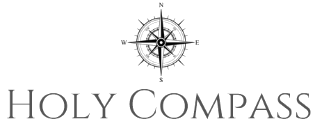Introduction
The Eastern Orthodox Church, a vibrant and deeply rooted Christian tradition, has played a significant role in shaping the spiritual and cultural landscape of the world for centuries. This blog post delves into the history, beliefs, practices, and contributions of the Eastern Orthodox Church, providing an in-depth understanding of its enduring legacy.
Historical Background
Origins
The Eastern Orthodox Church traces its roots back to the early Christian communities in the Middle East. After the Great Schism of 1054, the church separated from the Roman Catholic Church and established an independent path, continuing to draw inspiration from the original teachings of Jesus Christ and the apostles.
Byzantine Empire
The Eastern Orthodox Church played a central role in the Byzantine Empire, which emerged as a major power in the Eastern Mediterranean. The church provided spiritual guidance to the empire and influenced its political, cultural, and artistic developments. The Hagia Sophia in Istanbul, once a Christian basilica and later an imperial mosque, stands as a testament to the architectural and artistic achievements of the Byzantine-Orthodox era.
Spread and Influence
Over the centuries, the Eastern Orthodox Church spread throughout Eastern Europe, including Russia, Greece, Serbia, and Romania. It also had a significant impact on the Balkans, the Caucasus, and the Middle East. Orthodox missionaries brought Christianity to these regions, shaping local cultures and traditions.
Beliefs and Practices
Core Doctrines
The Eastern Orthodox Church holds to the Nicene Creed, which affirms the divinity of Jesus Christ and the Holy Trinity. Orthodox theology emphasizes the importance of tradition, with the church viewing itself as the guardian of the original Christian teachings. The church reveres the Virgin Mary as the Theotokos (“God-bearer”) and considers her to be the holiest human being.
Liturgy and Sacraments
Eastern Orthodox worship is centered around the Divine Liturgy, a sacrament that includes the Eucharist or Holy Communion. The liturgy is typically conducted in the Old Slavonic or Greek languages and is accompanied by beautiful hymns and iconography. Other sacraments include Baptism, Chrismation, Confession, and Marriage.
Monasticism
Monasticism plays a vital role in the Eastern Orthodox Church. Monks and nuns dedicate their lives to prayer, contemplation, and service. Monasteries have been centers of spirituality, learning, and cultural preservation throughout the church’s history.
Contribution to Christianity
Ecumenical Councils
The Eastern Orthodox Church played a prominent role in the Ecumenical Councils, which established the foundational doctrines of Christianity. The councils of Nicea, Constantinople, and Chalcedon shaped the beliefs of the entire Christian world.
Iconography
Eastern Orthodox iconography is a unique artistic tradition that depicts religious figures and scenes. Icons are revered as windows into the divine and serve as aids to prayer and meditation. The use of icons has influenced Western art and aesthetics.
Slavic Christianity
The Eastern Orthodox Church played a crucial role in the Christianization of Slavic peoples. Saints Cyril and Methodius, Byzantine missionaries, developed the Slavonic alphabet, enabling the translation of the Bible and other religious texts into Slavic languages. This paved the way for the spread of Christianity throughout Eastern Europe.
Contemporary Issues
Relations with Other Christian Traditions
The Eastern Orthodox Church has a complex relationship with other Christian denominations. While there are ongoing efforts towards ecumenical dialogue, there remain theological differences that hinder full communion.
Modern Challenges
The Eastern Orthodox Church faces challenges in the contemporary world, including secularism, religious pluralism, and the need for pastoral care in a rapidly changing society. The church is adapting to these challenges while remaining faithful to its traditional teachings.
Conclusion
The Eastern Orthodox Church is a vibrant and enduring Christian tradition with a rich history and profound beliefs. Its contributions to theology, liturgy, art, and society have left an indelible mark on the world. As the church navigates contemporary challenges, it continues to inspire and guide its followers in their pursuit of spiritual growth and communion with God.



